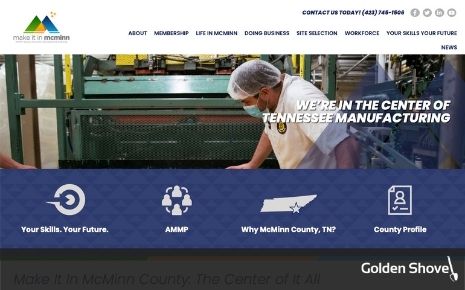Lead Generation Techniques Explained: Content & Offers

7 Mar 2022
News, Marketing
Making Your Community Irresistible
Use the Element of Scarcity
If you look at the principle of supply and demand, you’ll notice that when supply is limited, demand goes up. Scarcity has a psychological influence on us, making us want something even more if there isn’t enough to go around. In his book, Influence: The Psychology of Persuasion, Robert B. Cialdini states that “...opportunities seem more valuable to us when their availability is limited.” Why does it work so well? “... we know that the things are difficult to possess are typically better than those easy to possess, we can often use an item’s availability to help us quickly and correctly decide on its quality.” Instead of making our brain do the extra work of weighing pros and cons before making a decision, scarcity norms help us make a more simple decision.
Some examples of the scarcity principle include:
- Limited Time Offers
- Deadlines
Limited Time Offers
Limited time offers are among the most popular in the scarcity category. Just think about your average car dealership. Practically every commercial is a limited-time deal. “Get 0% financing before it’s gone; Come in today - these deals won’t last!”
We’re also seeing this with the housing market. Prices have gone up throughout the country because they fear that buyers won’t be able to secure a house prompting people to pay more than the asking price. When there is an abundance, or the perceived abundance, of houses on the market, buyers will typically offer less than the asking price.
Limited Quantity Offers
When something is of limited quantity, it suddenly becomes more unique or exclusive. In some studies, limited quantity or supply offers. Why? Because it’s hard to tell when an offer of limited quantity will suddenly become unavailable, while a time-based offer has a known end time. Limited quantity offers are great for not only getting people to say “yes” to your offer but to avoid procrastination. For example, Opportunity Zone investors know that they need to invest in a timely fashion to receive the offered tax benefits. This has prompted more people to enter the market and to invest in communities that they would have otherwise not considered.
The Bandwagon Effect
It’s a natural tendency for humans to copy one another, even without realizing it. We like to be part of tribes and social communities. So when we notice our social circle is doing one thing, we tend to follow suit. One great way to make an offer more valuable is to show that other people are participating in that offer. Robert B. Cialdini states that the social proof rule “... applies especially to the way we decide what constitutes correct behavior. We view a behavior as more correct in a given situation to the degree that we see others performing it.”
Proof in Numbers
When possible, a great way to indicate how awesome an offer is, is to mention the number of people who have purchased, downloaded, signed up, or donated. On your website, you should be promoting success stories and giving the number of successful people in your community. Indicate how many people have found jobs last year in your community. Highlight your incentives and show (don’t just tell) how much your community offered in incentives.
Leverage Newsjacking
After Prince William and Kate Middleton got married, no one could stop talking about Kate’s wedding dress. Within hours of the wedding, vendors began making near-identical copies or similar styles of the Stella McCartney-designed dress. Even vendors such as David’s Bridal now have a “royal” dress category so you can dress “just like Kate.”
When something is buzz-worthy, it creates high demand. In situations like this, you can align offers with what’s hot. Companies will often leverage newsjacking for this type of technique and it works very well for offers too.
Now, keep in mind that “newsjacking” doesn’t have to be as complicated as a royal wedding. It can be as simple as discussing what’s hot and on everyone’s mind. An example of this in action can be found at livability.com. In addition to their recognized editorial content and “best of…” lists, Livability offers paid advertising opportunities that come across as editorial content. Madison Regional Economic Development leveraged this option for its talent attraction campaign. The Livability content is viewed by over 200,000 people each year, with headlines like ‘Why Millennials Are Moving to Madison, Wisconsin’ and ‘6 Arts and Entertainment Attraction Near Madison, Wisconsin’ attracting views. It’s evident that this is the type of content people are looking for because readers are staying on Livability.com’s Madison pages for an average of 2 minutes - long enough to get a good idea of what the community has to offer.
Create Offers for Different Buying Stages
The most common offer seen on websites is “Contact Us.” Sure, you want all your prospects to contact you, but not everyone is ready. As you know, buyers are more likely to do their own research before ever engaging with a sales representative. And, every prospect is at a different stage of exploration. Some may need more education than others. That’s why it’s important to develop different offers at different buying stages. It’s also important to provide different formats of information for the many different preferences people have in terms of consuming content.
One of the most important things your organization should be doing is creating relevant and current news articles (bonus if they’re SEO-friendly). You should also have content for each of your target audiences. An entrepreneur will be at a different stage of business development than an expanding manufacturing company.
Avoid Gobbledygook - Be Original
I know you’re thinking the exact same thing that I thought when I read that word. What the heck is “gobbledygook”? Gobbledygook refers to jargon terms and phrases that have been overused and abused, rendering them meaningless (you’ll find them mostly in the high-tech industry, but everyone is an offender at one point or another). These words are meant to add more emphasis to a particular subject, but instead, they make your eyes roll.
Avoid these words when describing your offers:
- Next-Generation
- Flexible
- Robust
- Scalable
- Easy-to-Use
- Cutting Edge
- Groundbreaking
- World Class
In his eBook, The Gobbledygook Manifesto, David Meerman Scott gives the rule “When you write, start with your buyers, not with your product.” Donald Miller, CEO of Storybrand and author of Building a StoryBrand, states “Even if you have the best product in the marketplace, you will lose to competitor’s inferior product if they communicate more clearly.” You must be original and not cliche if you want to be scoring those meetings with site selectors and business owners.
Use High-Value Offer Formats
Not all offers are created equal. Some formats of offers perform better than others at converting leads, but you must know and understand your audience. Below are some types of offers (in order of performance) that generate the most amount of leads.
- eBooks, guides, and whitepapers
- Templates and presentations
- Research and reports
- Live webinars
- Blogs (make sure you’re including CTAs in your articles)
- On-demand videos
- Middle-of-funnel offers such as demo requests, contact sales, RFPs, etc.
It’s important to test different types of offers and present those offers at the right time - when your visitor is ready.
Download the Digital Lead Generation Whitepaper
About the Author

Audrey Anderson
Director of Marketing & Communications
Connect with Audrey on LinkedIn
Audrey Anderson is the Director of Marketing & Communications for Golden Shovel Agency. Audrey is responsible for the company's marketing efforts including managing the social media profiles, sending the bi-weekly newsletter "Economic Developer's EDGE," writing press releases, managing digital ads, and publishing content in line with a marketing strategy.
More Topics





